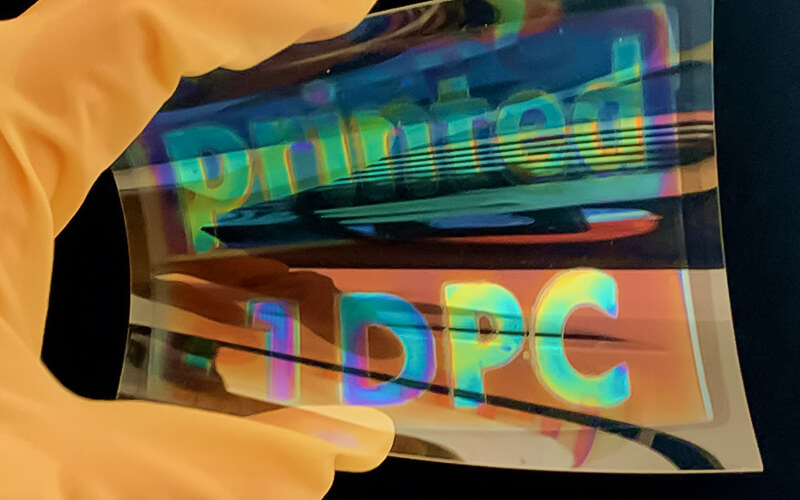Dielectric mirrors, also called Bragg mirrors, can reflect light almost completely. This makes them suitable for countless applications, for example in camera systems, microscopy, medical technology or sensor systems. Until now, these mirrors had to be produced in expensive vacuum apparatus. Researchers at the Karlsruhe Institute of Technology (KIT) have now printed Bragg mirrors in high quality with inkjet printers for the first time. The process could open the way to digital production of customised mirrors. The results were published in Advanced Materials (DOI: 10.1002/adma.202201348).
For Bragg mirrors, several layers of material are deposited thinly on a substrate. These mirrors, which consist of a large number of thin layers, form an optical mirror that ensures that light of a specific wavelength is specifically reflected. How strongly Bragg mirrors reflect depends on the materials, but also on how many layers are applied and how thick they are. Until now, Bragg mirrors had to be produced using expensive vacuum production facilities. The Karlsruhe team has succeeded for the first time in printing them on different substrates. This simplifies production considerably.
Inks made from nanoparticles
“It was a great challenge to develop suitable inks and establish a reliable process for the production of multiple layers,” says Professor Uli Lemmer from KIT’s Light Technology Institute (LTI), who heads the project within the Cluster of Excellence “3D Matter Made to Order”. The components of the inks must have suitable optical properties and also be soluble. In addition, each layer should be as even as possible to ensure a uniform stack of layers. It must also be possible to control the printing precisely and the results must be reproducible in order to reliably guarantee excellent optical properties, i.e. high reflectivity of the Bragg mirrors. The research team relied on nanoparticles for this purpose: “Due to the rapid development in nanochemistry, nanoparticles are becoming cheaper and more versatile,” says Lemmer. His team used a mix of two different materials, titanium dioxide and polymethyl methacrylate, as the optically effective components of the inks. With these inks, they were able to create the optical properties and thickness of a single layer with extreme precision in inkjet printing. “We achieved an ultra-high reflectance of 99 per cent with only ten double layers,” says Lemmer.
Printing on large and small areas
On the one hand, the manufacturing method developed by the researchers at LTI can be applied to very small areas down to ranges of a few micrometres, so that optical components for microsystems technology or camera systems, for example, can be easily manufactured. On the other hand, large surfaces such as solar modules, façade elements or advertising displays of several square metres can also be printed. It has even been possible to print the mirrors on flexible plastic films. “The completely digital manufacturing process allows the production of mirror layers precisely adapted to the application. This is an immense advantage over previous manufacturing processes,” says Lemmer.
As “The Research University in the Helmholtz Association”, KIT creates and imparts knowledge for society and the environment. Its goal is to make significant contributions to global challenges in the fields of energy, mobility and information. To this end, around 9 800 employees work together on a broad disciplinary basis in the natural sciences, engineering, economics, humanities and social sciences. KIT prepares its 22,300 students for responsible tasks in society, industry and science through research-oriented university studies. KIT’s innovative activities bridge the gap between knowledge and application for the benefit of society, economic prosperity and the preservation of our natural resources. KIT is one of the German universities of excellence.
Photo capture: Coloured, printed mirror layer on a foil. Inkjet printing allows structuring so that large-area logos can also be printed (Photo: Qihao Jin, KIT; DOI: 10.1002/adma.202201348)
Source: Monika Landgraf Strategic Development and Communication – Overall Communication
Karlsruhe Institute of Technology





